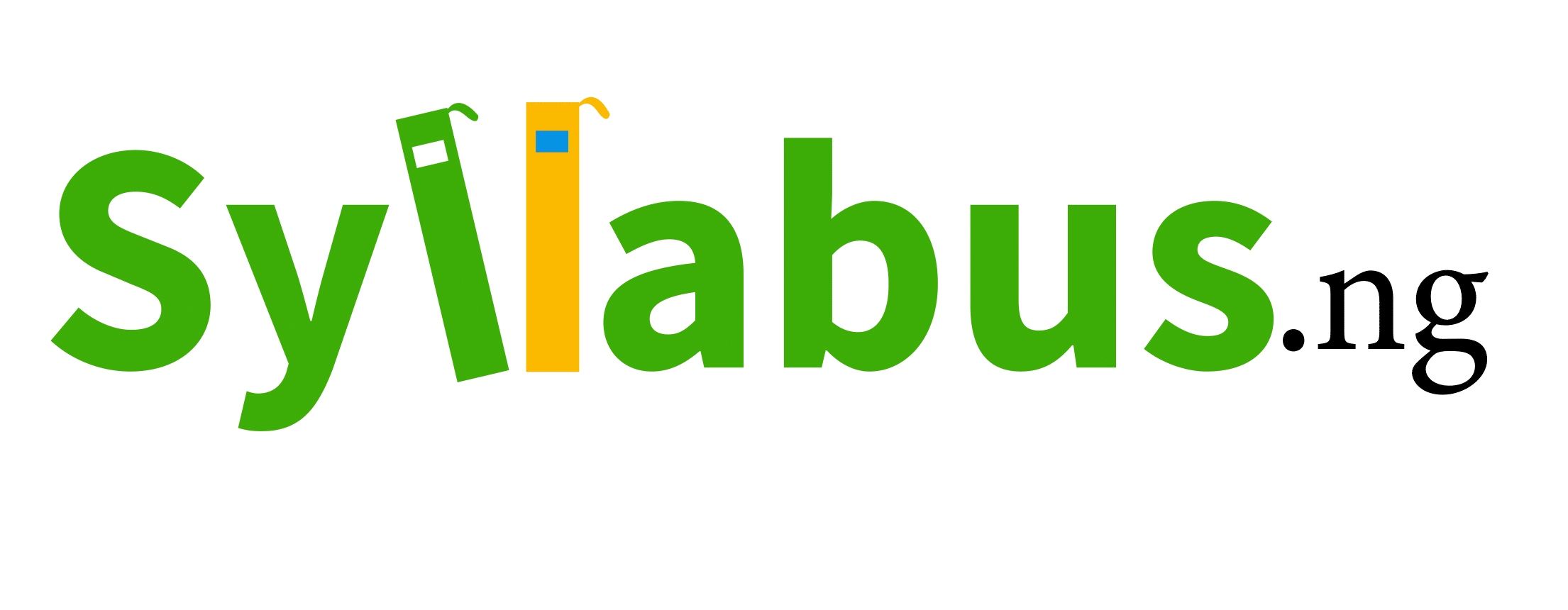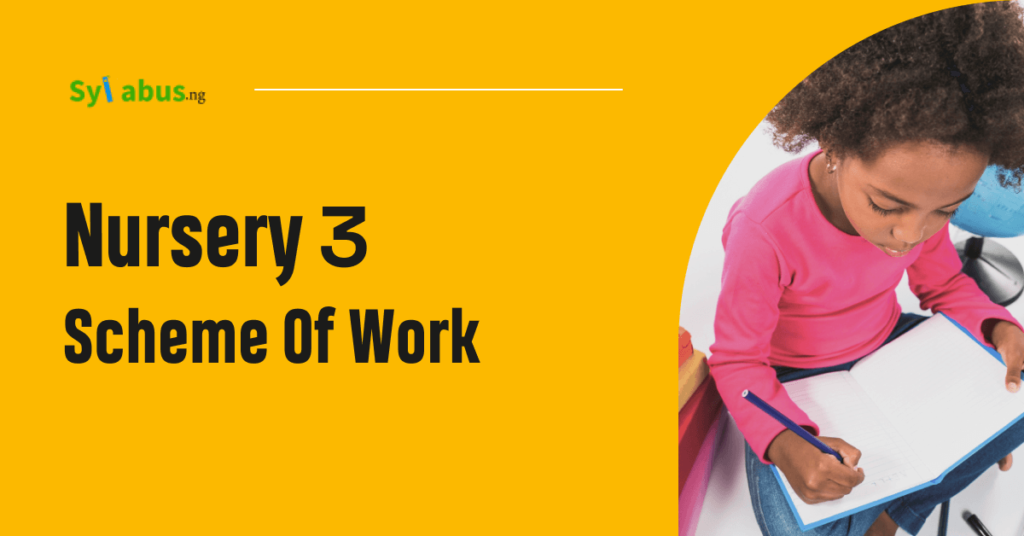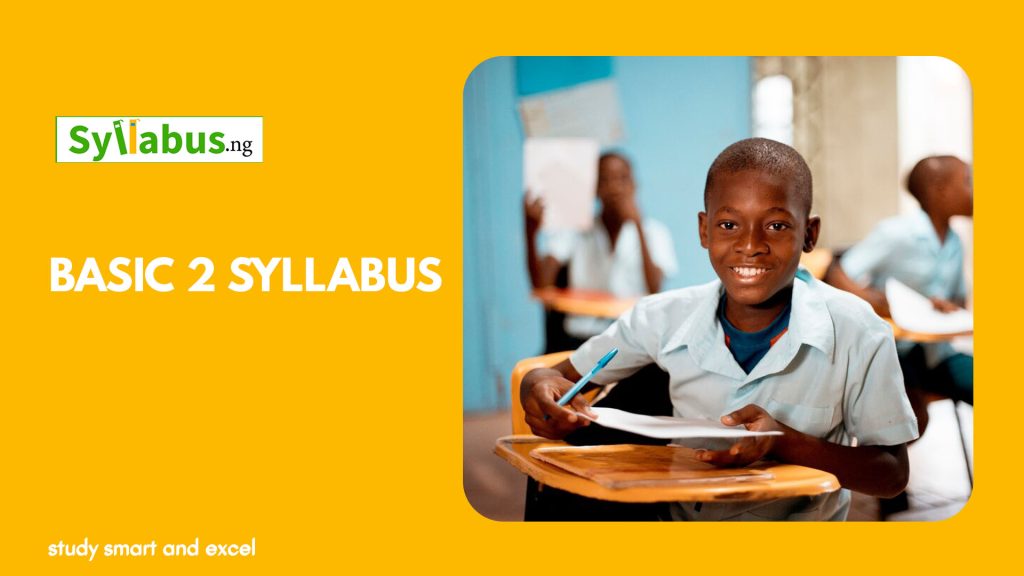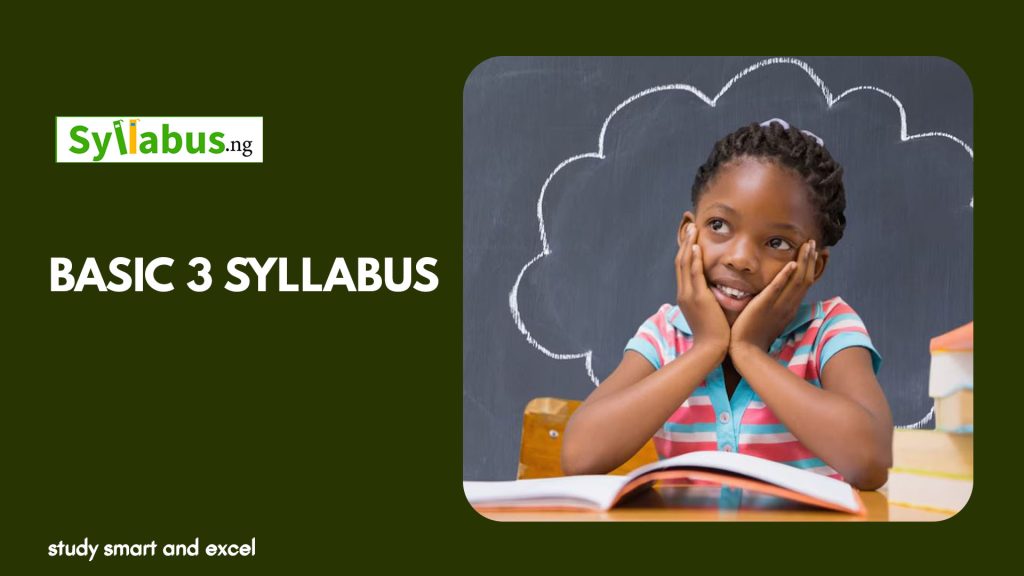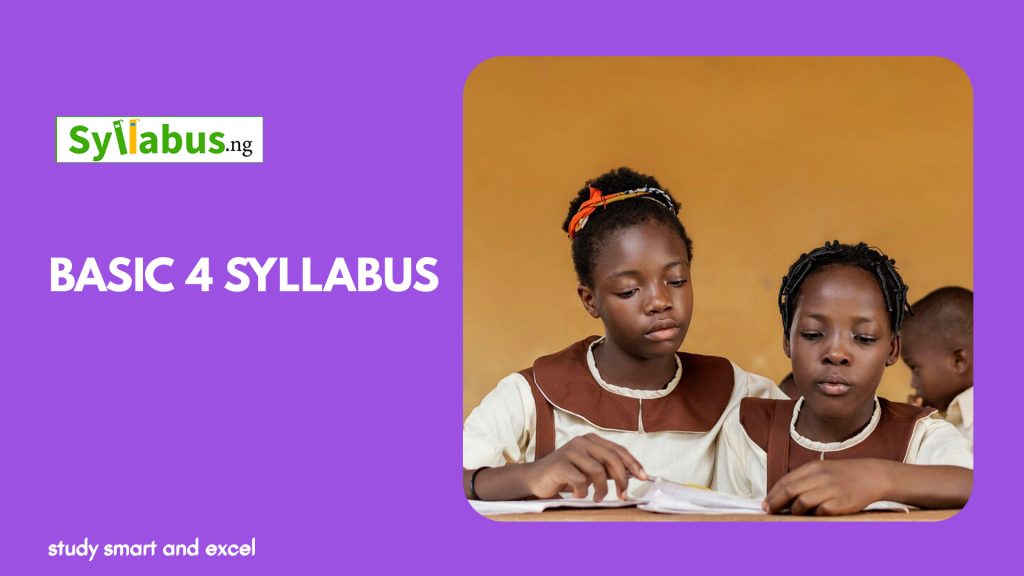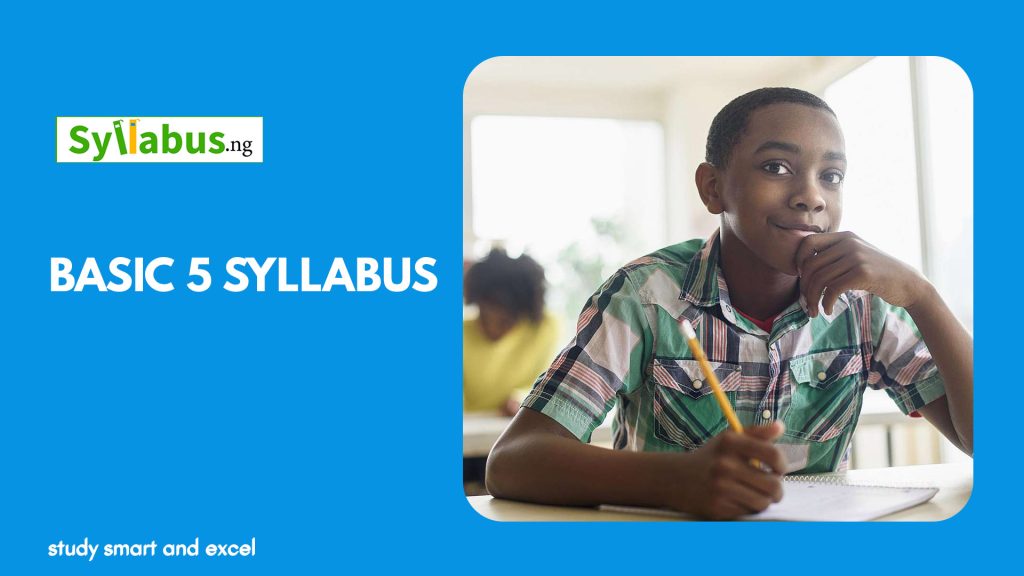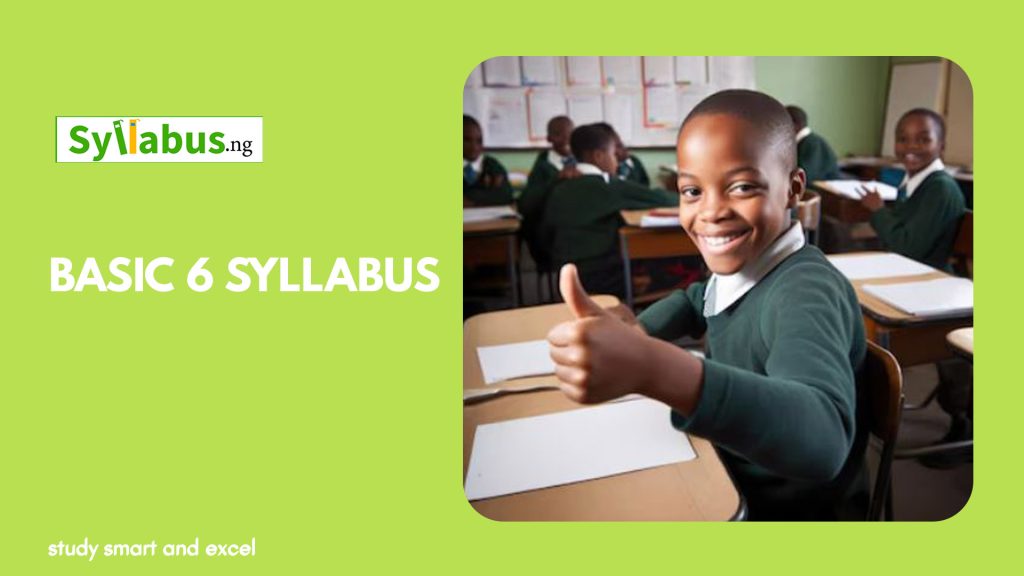Primary 1 Mathematics Scheme of Work
Download the Unified Basic 1 Scheme of Work for math, to serve as a guide for educators and primary school teachers

Home » Primary 1 Scheme of Work » Primary 1 Mathematics Scheme of Work
Home » Primary 1 Scheme of Work » Primary 1 Mathematics Scheme of Work
About Mathematics Scheme of Work for Primary 1
Primary one or Basic 1 is the stage where pupils will develop their Reading, Subtracting, Writing, Counting, Logical thinking, and Creative thinking abilities. This scheme of work will begin with pupils learning simple counting, before they move on to how to add, subtract, multiply and divide.
The topics covered are Numbers, Addition, Subtraction, Multiplication and Division, Measurements and Shape. The pupils will also be taught comparing and ordering of numbers, counting the numbers and also knowing how to put the numbers taught in writing and applying them in real life situations.
They will also be taught basic measurements and shapes, and using the things around them as ample illustration such as sugar cube(cube), match-box (cuboid), tin of milk- should be taught to the pupils using illustrations and the class should be an interactive class among the pupils as this learning condition will make the new topics taught to be easily understood by them.
Download Primary 1 Mathematics Scheme of Work

Know what’s expected of you as an educator
Download the Lagos State Unified Scheme of Work for Primary 1 Mathematics
Primary 1 First Term Scheme of Work for Math
| LAGOS STATE GOVERNMENT MINISTRY OF EDUCATION UNIFIED SCHEMES OF WORK FOR PRIMARY SCHOOLS | ||
| Mathematics Scheme of Work for Primary/Basic 1 | ||
| Class | Primary/Basic 1 | |
| Subject | Mathematics | |
| Term | First Term | |
| Week | Topics | Learning Objectives |
1 | WHOLE NUMBERS: Counting Skill: Counting numbers from 1-10 Reverse counting ofthe numbers. | Pupils should be able to: i. identify numbers from 1-10 ii. count objects from 1 – 10 apply numbcrs in real life situations e.g. head count, pans of the body. iii. categorize the number of different objects e.g. bottle tops, pencils etc |
| Writing Skill: Writing numbers 1 – 10, | ||
2 | WHOLE NUMBERS Counting Skill: -Counting 11-20 – Reverse counting of the numbers. | Pupils should be able to: I) identify and count number 11-20, 1-20 ii) count objects from 11-20 urite numbers 11-20 in numerals. iij) apply numbers in real life situations head count, part ofthe body. iv) categorize the number of different objects e.g. bottle tops, pencils etc rote count up to 20 and 20-1 v) solve quantitaåve reasoning in exercises related to counting of numbers. |
| Writing Skill – Writing numbers 1 -20, 1-20 and 20-1 – Sorting and classificaåon of objects on numbers 1-20 | ||
3 | WHOLE NUMBERS -Counting Skill: -Reverse counting | Pupils should be able to; i. count numbers 1-20 numbersl -20 and 20-1 ii. write numbers 1-20 of the numbers jn nurnerals. iii. identify numbers 1 •20 |
| Writing Skill – relate numbers to quantity numbers 1-20. | ||
4 | WHOLE NUMBERS (Contd) -Counting Skill: Numbers 21-30, 1-30 Reverse counting of the numbers. | By the end of the lesson, pupils should be able to: I. Idenåfy numbers from 21-30, 1-30 ii. count objecb from 21 30, 1-30 iii. me numbers 1-30 in numerals. iv. write numbers 1-30 in ascending order and descending order v. write numbers 1-10 in words |
| Writing Skill: Writing numbers 21-30, 1-30 Writing numbers 110 in words. | ||
5 | WHOLE NUMBERS (Contd) Counting Skills: Numbers 31-40, 1-40. -Reverse counüng of the numbers. | At the end of the lesson, pupils should be able to: i. idenåfy numbers from 31 • 40 ii. count objects from 31-40 and do the reverse iii. counting of the numbers. iv. write numbers 31-40, 1-40 in numerals. v. relate with the symbol 0 as a number vi. identifr the number 0. vii. differentiate the number 0 from letter 0. |
| Writing Skill: Write numbers I- 40 -Identify number 1-40 as a digit. | ||
6 | Comparing and ordering numbers Counting Skill:-Numbers from 41-50, 1-50 -Reverse counting of the numbers | Pupils should be able to: i. count and identify numbers from 41 – 50 ii. count objects from 41 -50 iii. write numbers 41 – 50, 1-50 in numerals. iv. identify and represent numbcrs from 1 —20 on the number line v. identify the value of numbers vii. compare the value of numbers viii. identify the equal to sign (=) ix. counting from 1 – 20 increase a digit number by one in order. |
| Writing Skill:Writing of the numbers 1-50 -Comparc and order numbers from 1-20 using <and >. | ||
| 7 | MID TERM BREAK | |
8 | Counting Skill: Identification, counting reverse counting Writing Skill: | At the end ofthe lesson, pupils should be able to: i. identify numbers from 21-50, ii. count number of objects from 21-50 and 1-50 write numbers 21-50 in numerals. iii. arrange numbers from 21-50,1-50 in order ofmagnitude. iv. skip count in 2s practice reverse counting of numbers. |
| -Writing of numbers 21-50, 1-50 Numbers 1 – 20 in words | ||
9 | Introduction to Math Ects: Counting Skill: Numbers 51-60 -Reverse counting of the numbers | Pupils should be able to: i. count and identify numbers from 51-60, 1-60 ii. count objects from 51 — 60 iii. wite numbers 51 – 60 in numerals. iv. explain the term “addition’ and its sign ‘+’ v. add zero to any number and identify the automatic answer vi. add two whole numbers with sum not more than 10 e.g5+ 1-6, 2+ 8=10 vii. add doubled numbers with sum not more than 10 e.g. 2+2=4, 3+3=6, 1+1=2 viii. apply addition of single digit numbers to real life situation (Real life problems) ix. solve quantitative reasoning on addition. |
| Writing Skill: Writing of numbers 51-60 160 -Addition of two 1- digit numbers with sum not more than 10. -Introduce zero property, -The concept of dou bles, – Count forward. | ||
10 | Comparison and Ordering of Numbers Counting Skill: -Numbers 61-70 -Reverse counting of the numbers. | At the end of the lesson, pupils should be able to: i. count and identify numbers 61 – 70, 1 -70; ii. identify numbers from 1 -50 on a number line; iii. read and write numbers 1 -70 in numerals; iv. compare numbers from 1-50 using more than, less than, and equal to; v. counting 2s and 10s from any number between 1-50. vi. Practice adding numbers sum not more than 10 in real life situations. |
| Writing Skill: -Writing of the numbers -Ordering of numbels: 1-50 -Comparing numbers 1 – 50 | ||
| 11 | Revision: | Revise |
| 12 | EXAMINATION | |
| 13 | EXAMINATION | |
Primary 1 Second Term Scheme of Work for Math
| CLASS | Primary/Basic 1 | |
| SUBJECT | Mathematics | |
| TERM | Second Term | |
| WEEK | TOPIC | Learning Objectives |
| 1 | Revision of first term’s work Counting Skill: Numbers1-70 Writing Skill: Numbers 1 – 70 | Pupils should be able to: i. count and write numbers 1-70 order numbers from 21- 50; ii. identify numbers from 1 -70; iii.add two 1- digit numbers with sum not more than 10 using math facts; iv. describe the value of zero when zero is added to numbers; |
| 2 | Introduction to Math facts: -Addition of numbers -Counting Numbers 71-80, 1-80. | Pupils should be able to: i. count and identify numbers 71-80, 1 – 80; ii. write numbers 1 – 80 in numerals; iii. explain the term addiüon”; iv.describe real life situations on double in math statements E.g. 5 fingers + S fingers = 10 fingers, 2 eyes+ 2 eyes = 4 eyes; v. add whole numbers with sum not more than 20; vi. add three whole numbers with sum not more than 20; vii. simple math addition e.g. skip count in 2s, 3s; viii. apply addition of single digit numbers to real life situations (Real life problems); ix. solve quantiutive reasoning on addition |
| Writing Skill: -Addition of two 1- digit numbers with sum not more than 20 -Addition of three 1- digit numbers with sum not more than 20. -The concept of doubles and near doubles -Count forward in 2s, 3s | ||
3 | Introduction to Maths Fact: -Subtraction of numbers -Counting Skills: Numbers 81-90, 91-100 -Count the numbers backwards | Pupils should be able to: i. count and idenüfy numbers from 81-90, 1-90; ii. write numbers 1-90 in numerals; iii. explain the term “Subtraction” and its sign list other terms related to; to subtract’ e.g. minus, take away, less, fewer, reduce; iv. analyse the order of numbers in subtraction; v. identify the minuend and subtrahend in a subtraction equation; vi. subtract 7.em (mm any number and identify the automatic answer; subtract a number itself count backward to subtract numbers; vii. subtract two whole numbers within 10; viii. subtract numbers on a number line apply subtraction of single digit in numbers real life situations (Real life pmblems). |
| Writing Skill: – Subtraction of two 1 digit numbers within to -Application of the concept in subtraction | ||
4 | Identification and counting of numbers 51-100 and 1 -100 | At the end of the lesson, pupils should be able to: i. count and identify numbers 51-100, 1-100; ii. count numbers of objects from 51-100 ; iii. write numbers 51-100 in numeral; iv. arange numbers 51-100 in order of magnitude; v. skip count in 2s and 10s from 1— 100 and backwards fiom 100 — 1; vi. write and practice addition of two whole numbers with sum not more than 20; vii. subtraction of numbers within 20 count numbers up to 100 and count on any number bad-wards to zero. |
| Writing Skill: -Writing of numbers 51 — IOO and 1-100 in numerals -Dictation of numbers | ||
| 5 | Introduction Math facts: -Addition of numbes: Numbers 101-110 | At the end of the lessons, pupils should be able to: i. identify numbers from 101-110; ii. count from 1-110 iii. write numbers 1 — 110 in iv. explain the term addition;’ v. add two whole numbers with sum not more than 20 vi. write simple math equations 10 + 8 + 5= 23 vii. identify fact families in addltion: 4 + 6 = 10 and 6 + 10 viii. skip count in 2s.3s and 10s; xi. apply addition of single and doubled numbers to real life situations (Real life problems); x. solve quantitative reasoning on addition find. |
6 | Introduction to Math facts: Subtraction of numbers Counting Skill: Numbers 110-120 | At the end of the lessons Pupils should be able to: i. identify numbers from 110-120 ii. Count fmm I – 120 iii. write numbers 1 — 120 in numerals iv. explain the tem ‘Subtraction- v. list other terms related to subtraction like minus, take away, less, fewer, reduce, lost, remain vi. identify minuend and subtrahend in a subtracti0n equation; vii count forward and backwards in 2s and 3s; viii. count backward to subtract numbers; ix. subtract numbers 1 more or less than ; x. subtract two whole numbers within 20; xi. write simple math equations 12 – , 17-11; xii. subtract numbers on a number line only subtraction of single digit numbers from double digit numbers to real life situaüon (Real life pmblems) . |
| Writing Skill: -Subtraction of two 1digit numbers within 20 -Subtraction of I-digit number from 2-digit number within 20. | ||
| 7 | MID TERM BREAK | |
8 | Whole Numbers Counting Skills: Numbers 121-130 and 1-130 | At the end of the lesson, pupils should be able to: i. idenüfy numbers from 1-130. ii. read and write numbers 1-130 in numerals iii. compare numbers from 1 — 100 using more than, less than and equal to. iv. count forward in ones from any number between 1-100. v. countfrom 1 – 130 order numbers in 2s and vi. write dictated numbers identify shapes used in counting numbers add two whole numbers |
| Writing Skills: Numbers 121-130, 1130 -Dictation of numbers -Ordering of numbers: 51-100 -Comparing numbers within 1-100 | ||
9 | Two Dimensional Shapes Counting Skills: -Numbers 231-240 -Skip count in 2s, 5s, 10s | At the end of the lesson, pupils should be able to: i. count and identify numbers from 231-240 count forward to 240 and backwards. ii. skip count in 2s, 5s, and 10s. iii. recognize and identify the objects that belongs to 2 dimentional shapes around them. iv. identify different shapes such as square-chess board, Circle-tyre or coin, Rectangular-door, Triangle- C-caution. v. mention 2 dimentional shape containers used at home. viapply capacity in real life situations vi. solve quantitative reasoning |
| Writing Skills: – Writing of the numbers – Recognization of curved line, straight lines. – Description of shapes and Figures | ||
10 | Capacity Three dimensional Shapes. Counting Skills: -Number 241-250 | At the end of the lesson, pupils should be able to: i. count and identify numbers from 241-250 count forward to 240 and backwards. ii.skip count in 2s, 5s, and 10s. iii. mention the objects that are three-dimensional shapes in nature e.g sugar cube-cube, match-box- cuboid, tins of milk- cylinder, flying kitekite. v. mention 3 -dimensional shape containers used at home for storage of concrete objects and storage of liquids compose and decompose 3D shapes vi. Apply capacity in real life situation vii. Solve quantitative reasoning in exercise related to 3 dimensional |
| Writinf Skills: – Writinf of the numbers – description of shapes and numbers -compose a big 2-D shape using smaller given shapes -decompose a larger shape into a given number of smaller shapes. | ||
11 | Data collection -Counting Skill: -Numbers 1-250 -Skip count in 2s, 5s and 10s up to 250 and backwards | By the end ofthe lesson, pupils should be able to: i. count and identify numbers from 1-250 ii. count forward up to 250 and backwards. iii. skip count in 2s, 5s and 10s to 250 and back. iv. give simple meaning of data collection v. retrieve infomaäon on pictograph and interpret data presented in displays; vi. compare the result on two or more information retrieve on pictograph e.g. the difference in children loving colours; vii. apply collection in real life situations viii. Solve reasoning in exercises relating to data collecton |
| Writing Skill: -Writing of the numbers •Data collection -Pictograph -Retrieve and interpret data -Collate their age group (mates) with their heights | ||
| 12 | REVISION | |
| 13 | EXAMINATION | |
Primary 1 Third Term Scheme of Work for Math
| CLASS | Primary/Basic 1 | |
| SUBJECT | Mathematics | |
| TERM | Third Term | |
| WEEK | TOPICS | Learning Objectives |
| 1 | Revision of second term’s work -Counting Skill: Numbers 1-170 -Writing Skills: | Pupils should be able to: i. count numbcrs 1-170; ii. order numbers fmm 1 -100; iii. identify numbers from 1-170; iv. add two 1- digit numbers with sum not more than using math hcts; v. describe the value of zero when zero is added and subtracted from identity fractions: halvz and quarters. |
2 | Introduction to Addition of Numbers -Counting Skills: Numbers 171-180- -Count in 2s and 3s. | At the end of the lesson, pupils should be able to: i. count and identify numbers from 171 —180; ii. write I -180 in Numerals iii. add two whole numbers with sum not more than 50; iv. solve simple math addition 20 + 30 = 50 and 30+20=50; v. identify place value of two digit numbers; vi. skip count in 3s and 10s; vii. apply addition of two double digit numbers in life situations (Real life problems); viii. solve quanütaüve reasoning. |
| Writing Skills: -Writing of numbers 171-180 -Addition of two 2-digits numbers of not more than 50 | ||
3 | Introduction to Math facts: Subtraction of numbers Counting Skill: -Numbers 181-190 -Skip count in 2s and 10s | By the end of the lesson, pupils should be able to: i. count and identify numbers from 181-190; ii. count from 1 – 190; iii. Skip count in 2s and 3s; iv.write numbers 1 190 in numerals interprete the functions of these symbols: + , – and? v. solve missing number problems involving numbers up to 20 given statements using the symbols + , – and add and subtract I-digit and 2-digits numbers up to 50, including zem; vi. apply numbers in real life situations (Real Life Pmblems). |
| Writing Skill: -Writing of the numbers -Subtraction involving addition | ||
4 | Money:Nigerian Currencies Counting Skill: -Numbers 190-200 | At the end of the lesson pupils should be able to: i. count and identify numbers; ii. count forward and backward to 1 skip count in 2s, and 5s using money; iii. explain money and tis importance and describe ways money can be spent and kept; iv. recognize different denominations in Nigeria Currencies 1k 5k.10k, 25k, 50K, 100, N200,N500 arrange coins in order of their real values. v. differentiate between coins and one coin in terms of (in value) arrange naira note and coins in order of their values using ordinal numbers to identify their position and order. |
| Writing Skill: -Writing of the numbers -Recognition of Coins and notes | ||
5 | Money (Contd.) Counting Skills: 201-210 | At the end of the lesson pupils should be able to: i. count and identify numbers from 1-210; ii. count forward to 200 and backward to 1; iii. skip count in 2s, 3s, and 5s using money; iv. arrabge naira notes in order of their value using ordinal numbers to identify their position and order; v. add and subtract in kobo and naira with different value not exceeding 50 Kobo and 50 Naira vi. Buy, sell and calculate the balance. |
| Writing Skills: Writing of the numbers -addition and subtraction of coins and the naira notes (without regrouping) -Learn the use of money in transaction. | ||
6 | Length: Counting Skills Numbers 211-220 -skip count in 2s, 5s and 10s | At the end of the lesson pupils should be able to: i. count and identify numbers from 211-210; ii. count forward to 220 and backward; iii. skip count in 2s, 5s and 10s; iv. give the meaning of length estimate and given distance with natural unit(non-standard unit) such as hand span, index finger length. v. measure length with natural unit such as foot length, finger span, and hand span. vi. compare the length of two or three object using the vocabulary; long, longer, longest.or short, shorter. vii. differentiate between height and length; viii. apply measurement in real life situation e.g positioning of objects in their classroom, white marker board and books, |
| Writing Skills: Writing of the numbers; -Non standard measurement of length; -Standard measurement of length; – Comparison of length of object. | ||
| 7 | MID TERM BREAK | |
| 8 | Weight Counting Skill: – Number 221 – 230 -Skip count In 2s, 5s and 10s. | At the end of the lesson, pupils should be able to: i. count and identify numbers from 221-230; ii. count forward 1 to 230 and backwards; iii. skip counting in 2s, 5s and 10s. iv. give the meaning of weight compare the weight of some common objects around the school using the light” and *heavy” or “lighter than’ or heavier than” apply weight in real life situation (Real life Problems) v. subtract 1 digit numbers from 2 digit numbers using weight parameters. |
9 | Two dimensional shapes Counting Skill: -Numbers 231-240 -Skip count in 2s, 5s, 10S. | By the end of the lesson, pupils should be able to: i. count and identify numbers from 231-240; ii. count forward to 240 and backwards; iii. skip count in 2s, 5s and 10s. iv. recognize and identify curved lines or straight lines v. mention and identify the objects that belongs to 2 dimensional shapes around them identify different shapes such as Square-chess board, Circle tyre or coin, Rectangle- door Triange; vi. mention 2 dimensional shape containers used at home vii. apply in real life situaäon; viii. solve quantitative reasoning. |
| Writing Skills: -Writing of the numbers -Recognition of curved line, straight lines -Description of shapes and figures. | ||
10 | Capacity: 3 Dimensional shapes Counting Skill: -Numbers 241-250 | By the end of the lesson, pupils should be able to.’ i. count and identify numbers from 241 -250 ii. count forward to 250 and backward; iii. skip count in 2s, 5s and 10s up to 250; iv. mention the objects that are 3 – dimensional shapes in nature e.g. sugar cube -cube, match-box cuboid, tin of milk- cylinder,flying kitekite. v. mention 3 -dimensional shape containers used at home for storage of concrete objects and storage of liquids compose and decompose 3D shapes vi. Apply capacity in real life situation vii. Solve quantitative reasoning in exercise related to 3 dimensional |
| Writing Skill: -Writing of the numbers •Description of shapes and figures -Compose a big 2-D shape using smaller given shapes •Decompose a larger shape into a given number of smaller shapes | ||
11 | Data collection -Counting Skill: -Numbers 1-250 -Skip count in 2s, 5s and 10s up to 250 and backwards | By the end ofthe lesson, pupils should be able to: i. count and identify numbers from 1-250 ii. count forward up to 250 and backwards. iii. skip count in 2s, 5s and 10s to 250 and back. iv. give simple meaning of data collection v. retrieve infomaäon on pictograph and interpret data presented in displays; vi. compare the result on two or more information retrieve on pictograph e.g. the difference in children loving colours; vii. apply collection in real life situations viii. Solve reasoning in exercises relating to data collecton |
| Writing Skill: -Writing of the numbers •Data collection -Pictograph -Retrieve and interpret data -Collate their age group (mates) with their heights | ||
| 12 | Revision | |
| 13 | EXAMINATION | Revision |
| 14 | EXAMINATION | EXAMINATION |
Recommended Mathematics Textbooks for Primary 1
Main Textbook
- C.F. Oredugba et al, New Method Mathematics Primary 1, Learn Africa, 2015.
- MAN, MAN Primary Mathematics Book 1, UP Plc, 2017.
- Judeson. A.Ogberaha, Inside Out Mathematics Primary 1, Learn Rite, 2016.
- C. F. Oredugba et al, New Method Maths Workbook 1, Learn Rite, 2016.
- Cambridge, Smart Maths Workbook Primary 1, Cambridge, 2016.
- T. M. Asiru et al, Modular Maths Workbook, Evans, 2015.
- S.D. Lodan, Learn Maths Workbook Primary 1, WABP. 2016.
- T. M. Asiru et al, Nelson Maths Workbook Primary 1, Nelson, 2016.
- Paul Broad Bent & Co, High Five Maths Workbook Primary 1, Learning Solution, 2016.
- K.A Akingbehin et al, Numerical Quantitative Teacher’s Guide, Evan, 2015.
- B. Wellington et al, Bounty Answers Books 1-6, Bounty Press, 2013.
- Samuel Ilori et al, Champion Primary Maths Teachers’ Guide, Macmillan, 2014.
- J. Aderohunmu et al, New General Mathematics Primary 1, Pearson, 2014.
- S. D. Lodan, Learn Mathematics Primary 1, WABP, 2016.
- Thompson U. Akpan et al, New Mathematics for Primary 1, Tanus, 2017.
- Mugumu Deogratias et al, High Standard Mathematics for Primary 1, Spectrum, 2014.
- Cambridge, Smart Mathematics Primary 1, Cambrigde, 2016.
- E. C Nna and co, Comprehensive Maths for Primary 1, Literamed, 2015.
- Samuel Ilori et al, Champion Primary Maths BK 1, Macmillian, 2014.
- Raji Basit Alade et al, Easy Way to Mathematics Primary 1, Sterling, 2014.
- JA, Ogunwuyi et al, Evans Modular Math, Primary 1, Evans, 2015.
Workbooks
- HEBN, Prime Mathematics Workbook 1, HEBN, 2014.
Quantitative Reasoning
- I.J. Owolabi, Quantitative Reasoning for Lower Basic, Extension, 2015.
- HEBN, HEBN Quantitative Reasoning BK, HEBN, 2016.
- Raji Basit Alade et al, Sterling Quant. Reasoning Pry 1, Sterling 2013.
- Abdulai O. I, Step by Step Quantitative Reasoning and Workbook 1, De-Cliff Global, 2016.
- Judeson A. Ogberaha, Inside Out Quant. Reasoning Pry 1, Learn Rite, 2015.
- A-A. Adeyinka, Melrose Quant. Reasoning Bk I, Melrose, 2014.
- T,A.O. Olayiwola et al, Quantitative Reasoning for Primary 1, Ramsad, 2015.
- Shower Books, Shower Books Quantitative Reasoning Book 1, Shower Books, 2015.
- Kofi Danquah, QuantitativeReasoning for Pry1, WABP, 2016.
- Shower Books, Metropolitan Q/R with Vocational Studies Bk 1, Shower Books, 2015.
- Folu Alonge, Quantitative Reasoning for Pry 1, Learn Africa, 2013.
- Tuttuh Adegun M. et al, Quantitative Reasoning for Pry 1, Macmillan, 2015.
Mental Math
- Oloruntimilehin J.A, Functional Daily Maths Bk 1, Functional Books, 2015.
- Judy Tertimi, Mental Maths for Pry Sch Bk 1, UP Plc, 2014.
- Modupe Oluyemi, Five-Sums-A-Day State 1, Straight Gate, 2016.
- Alan Parker, Mental Maths Strategies, Learning Solution, 2014.
- Evans, Day-by-Day Sums Pry 1, Evans, 2012.
- CSS Bookshop, Mental Mathematics Bk 1, CSS Bookshop, 2015.
- Up Plc, Young Achievers Mental Maths Bk 1, Up Plc, 2014.
- Evans, Graded Mental Sums Pry 1, Evans, 2016.
- Rasmed, New Waves Mental Maths Pry 1, Rasmed, 2015.
- R. Singh, Know Your Aptitude for Pry 1, UP Plc, 2014.
Mathematics Supplementary Books.
- Oluranti A.J. Owolabi, Basic Concept in Maths Pry 1 Maths, Litramed, 2017.
- Sue Phillips,Made Easy Key Stage, Bounty Press, 2014.
- Sue Phillips, Maths Made Easy Beginner, Bounty Press, 2014.
- Gbenga Babalola et-al, Smart Kid for Pry I, Treasure, 2017.
Mathematics Dictionary
- Job Dangana et al, Mathematics Dictionary Pry I -2, First Pyramid, 2014.
Download Primary 1 Mathematics Scheme of Work

Know what’s expected of you as an educator
Download the Lagos State Unified Scheme of Work for Primary 1 Mathematics
